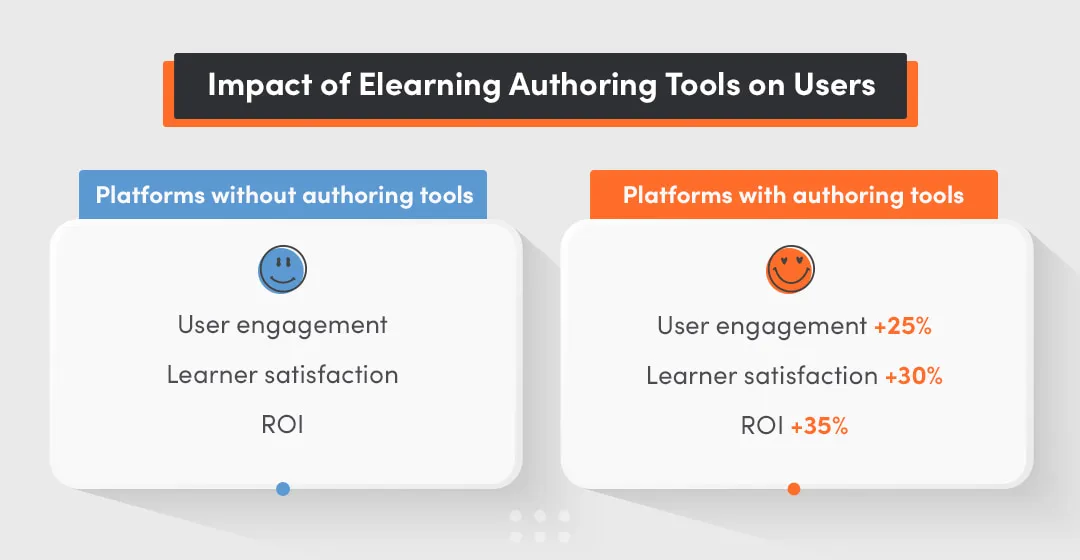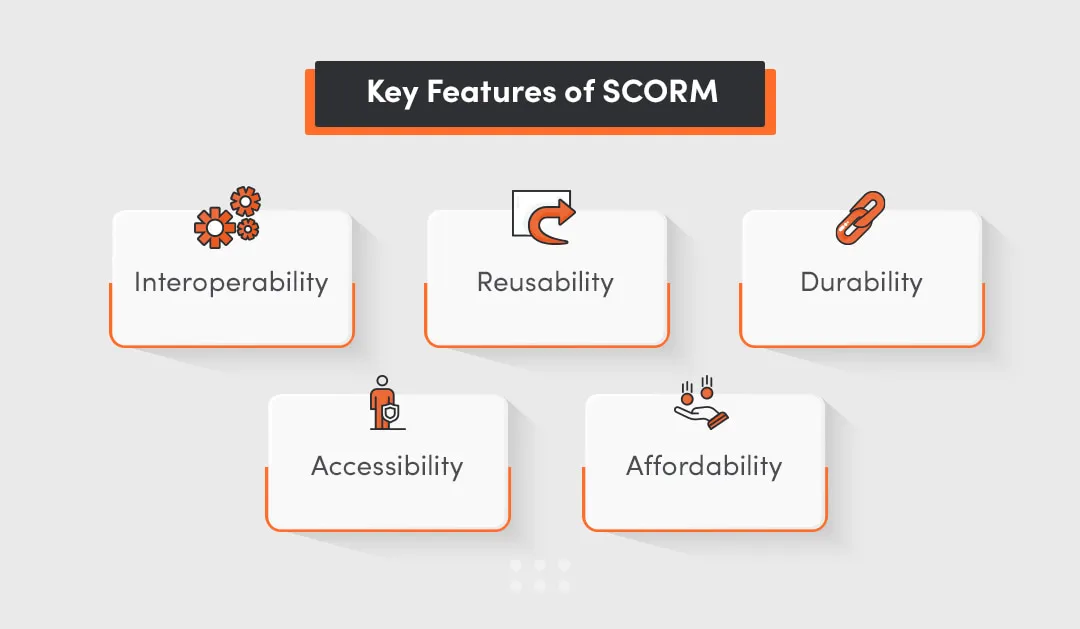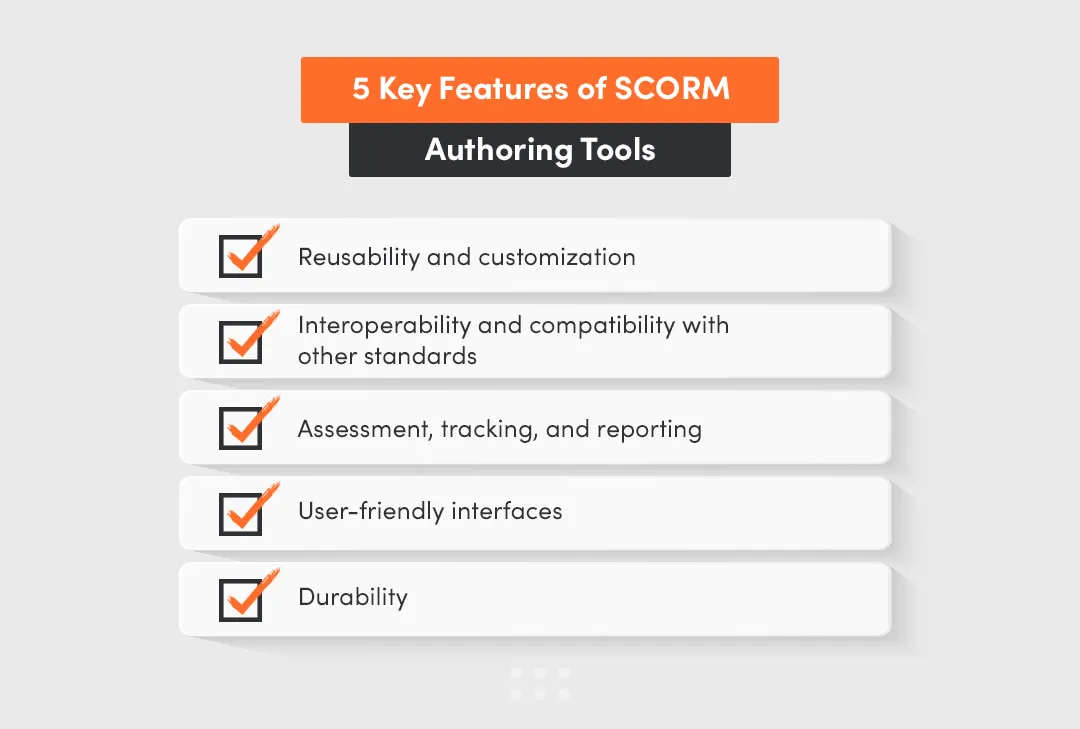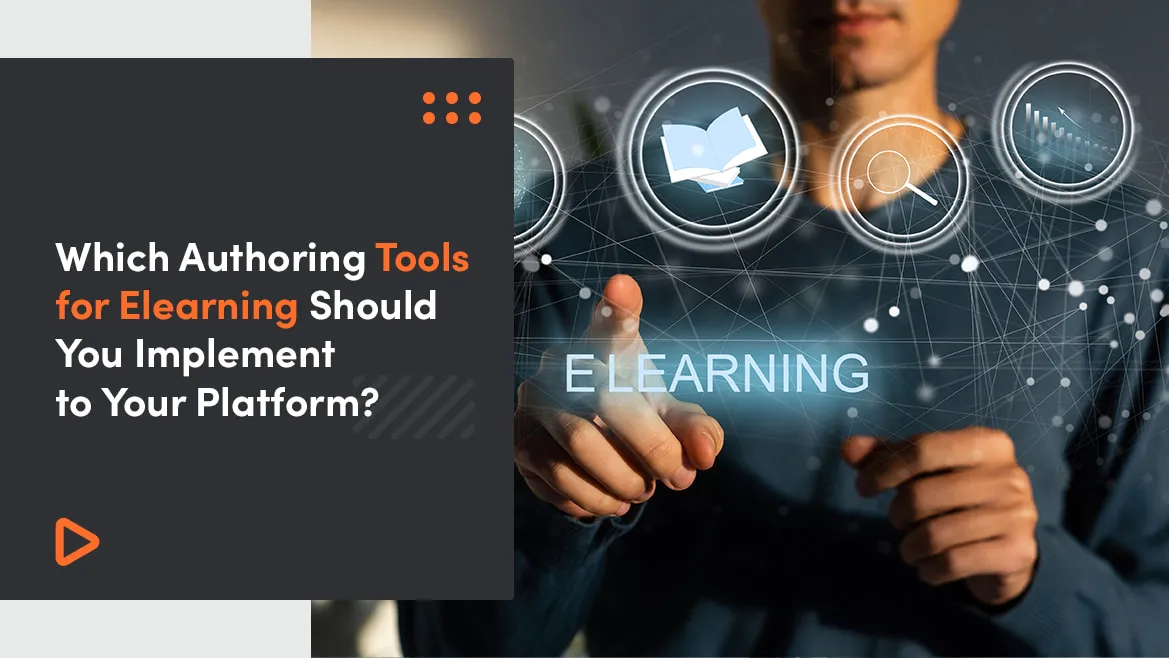Selecting the best elearning authoring tools is critical to the success of an elearning platform. These technologies enrich the learning experience by allowing platform managers to create interactive information, which increases learner engagement and retention. They help expedite content creation, lowering the time and effort required to produce high-quality elearning products.
The worldwide Learning Management System (LMS) industry has grown significantly as elearning authoring tools have become more widely adopted. The LMS market was valued at $17.74 billion in 2023 and is expected to increase to $20.5 billion by 2024, with a compound yearly growth rate (CAGR) of 15.6%.
This expansion is due to the growing need for flexible and adaptable elearning solutions, the advancement of blended learning techniques, and the globalization of education.

According to a report, companies that employ the best elearning authoring tools for elearning platforms report a 25% increase in user engagement and a 30% spike in learner satisfaction. These organizations also get a 35% better ROI on their elearning projects.
What will you learn from this article?
- What are the elearning Authoring Tools and SCORM?
- How does SCORM impact the elearning Authoring tool?
- How to select the best elearning authoring tool?
- Why is TinCan (xAPI) Considered as the Next Generation of SCORM?
- Key features of best elearning authoring tools
- Examples of best elearning authoring tools and their pros and cons
- What is the value of Interactive Content in Learning for Users?
-
Elearning Authoring Tools create interactive digital learning materials for L&D teams.
-
Elearning authoring tools offer customizable content, team collaboration, easy updates, swift creation, continuous improvement, and scalable solutions.
-
SCORM ensures interoperability, reusability, durability, accessibility, and affordability of elearning content while tracking learner performance.
-
Cloud-based elearning authoring tool (e.g., Articulate 360) offer online access and collaboration; desktop tools (e.g., Adobe Captivate) provide offline use and control.
-
TinCan (xAPI) offers advanced tracking of diverse learning experiences and greater flexibility.
-
Interactive content enhances engagement, retention, personalized learning, and efficiency, and reduces costs for businesses.
-
Elearning Authoring tool improves training efficiency and ROI, and ensures compliance with industry standards.
Elearning Authoring Tools and the Value of SCORM
Learning and Development teams in many organizations use the best elearning authoring tools to create training materials covering compliance, and other topics to train the employees.
The most common format for these will be online courses with interactive elements like quizzes, click-to-reveal interactions, and, more recently, gamified and mobile learning with tailored information.
It fosters seamless collaboration among writers, SMEs, and stakeholders, enhancing teamwork. The tool simplifies the implementation of corporate elearning courses across various settings and allows for quick updates to comply with new regulations. Additionally, it facilitates the swift creation of supporting digital learning content, adapting to changing needs. By gathering feedback and evaluating data, the tool continuously improves the performance of elearning courses.
Is Elearning Software Different From an Authoring Tool?
The phrase "elearning software" is broad and describes various components in a learning technology stack. elearning software often includes features like course management, learner analytics, communication tools, and assessments. Examples include Learning Management Systems (LMS) like Moodle or Blackboard.
Elearning authoring tools, on the other hand, are specialized applications used to create elearning course content. They allow instructional designers to develop interactive and multimedia-rich educational materials, such as quizzes, simulations, and video tutorials. Examples include Articulate Storyline and Adobe Captivate.
Learning content management system (LCMS) is a one-stop shop for producing, hosting, organizing, and distributing material. Some LCMSs can be referred to as both an LCMS and elearning authoring tool because they can now offer all the features.
In essence, elearning software focuses on delivering and managing learning while elearning authoring tools are used to create the learning content.
What Is SCORM and How Does It Impact the Elearning Authoring Tool?
Sharable Content Object Reference Model, or SCORM, is a standard for developing online courses that integrate with LMSs (learning management systems) and other online courses. It is now the accepted industry norm or default for interoperability.
If your learning management system (LMS) complies with SCORM, you may use elearning materials produced using any SCORM-compliant authoring tool or from any vendor. You would be forced to use a single, exclusive method of content coding in the absence of the standard.
In other words, SCORM stands for "shareable content objects (SCOs)." An SCO is a single chapter, page, or any other piece of training material that the LMS recognizes as a separate entity that can be found, enrolled in, or accessed.
Additionally, some limited data on learners may be collected due to SCORM. More specifically, using a SCORM LMS, you can monitor which elearning courses an individual has seen, how long they spent on them, if they finished them, and how well they did on the quizzes.
Though there are numerous versions of this standard, anything supporting any of them is often called "SCORM."

Key Features of SCORM
- Interoperability: SCORM-compliant content can be used across various LMS platforms without modification.
- Reusability: Content can be reused in different courses and contexts.
- Durability: Content remains functional even when LMS software is updated.
- Accessibility: Content can be accessed from any LMS that supports SCORM.
- Affordability: Reduces costs by enabling content reuse and system compatibility.
Types of SCORM Authoring Tools
There are two types of SCORM Authoring Tools and they are explained below:
SCORM - Cloud-Based Authoring Tool
A cloud-based authoring tool is hosted online and offers several advantages:
- Accessibility: It can be accessed from anywhere with an internet connection, facilitating remote work and collaboration.
- Automatic Updates: It provides regular updates and new features are rolled out without requiring manual installation.
- Collaboration: Teams can work together in real time, making it ideal for distributed teams.
- Scalability: It can easily be scalable to meet the needs of growing organizations.
Examples: Articulate 360, Elucidat, Lectora Online
Desktop SCORM Authoring Tools
Desktop SCORM authoring tools are installed on a local computer and provide:
- Performance: It offers fast performance since they are not dependent on internet speed.
- Full Control: It offers a greater software environment and data security control.
- Offline Work: These elearning authoring software can be used without an internet connection, making them reliable in areas with poor connectivity.
- One-Time Purchase: Typically involves a one-time purchase rather than a subscription model.
Examples: Adobe Captivate, Articulate Storyline, iSpring Suite
TinCan (xAPI) as the Next Generation of SCORM

TinCan, also known as the Experience API (xAPI), represents a significant advancement in elearning technology, building on the limitations of the older SCORM standard. While SCORM has been a foundational standard for elearning since the early 2000s, it primarily focuses on tracking course completions, pass/fail rates, and time spent on modules within a Learning Management System (LMS). This narrow focus limits its ability to capture the full scope of learning experiences, particularly those outside traditional elearning environments.
In contrast, TinCan (xAPI) offers a more flexible and comprehensive approach to tracking learning activities.
It allows you to create it for capturing a wide variety of learning experiences, whether online or offline. This includes reading articles, attending webinars, participating in discussions, or even learning through on-the-job experiences.
The data is stored in a Learning Record Store (LRS), which can aggregate and analyze learning data from multiple sources. This flexibility gives organizations a more holistic view of learner progress and performance, ultimately leading to more personalized and effective training programs.
Why is TinCan (xAPI) Considered as the Next Generation of SCORM?
Furthermore, TinCan (xAPI) supports modern web technologies and is designed to be more adaptable to the new digital learning trends. Unlike SCORM, which is tied to LMS environments, xAPI can function independently, allowing learning activities to be tracked and recorded in various environments. This enhances the ability to innovate and integrate new elearning courses, tools, and methodologies. This makes TinCan (xAPI) a more versatile and future-proof solution for organizations looking to expand and enhance their e-learning software development capabilities.
5 Key Features of SCORM Authoring Tools
SCORM-compliant courses are future-proof, ensuring long-term usability and adaptability. This is why it offers numerous advantages for the growing elearning market. Here are five key benefits of SCORM authoring tools, each explored in detail:

Reusability and Customization
Reusable and customized elearning course materials can be produced via SCORM. The courses and modules created with SCORM standards are adaptable and can be included in other courses on your learning management system. SCORM encourages reusability and customization in the context of elearning in the following ways, as shown below:
Modular Design
Modular content production is encouraged by SCORM. Education resources are broken down into more manageable, standalone pieces called "Sharable Content Objects" (SCOs). Any type of learning component, including quizzes and standalone courses, can be included in these SCOs. Due to the modular design, the content makers can create separate units covering particular subjects or abilities.
Content Packaging
By offering a standardized approach, SCORM makes content packaging easier. A package with the necessary SCO files, resources, and metadata is neatly packed. This package makes it simple to integrate and transfer into many LMSs. As a result, content producers can create a collection of customized SCOs that are easily reusable and can be used in various classes or learning initiatives.
Reusable Quizzes and Assessments
SCORM facilitates the development of reusable tests and assessments to create courses. Content developers can build quizzes as isolated SCOs rather than developing a new evaluation for every course. The time and work required to create fresh evaluations for each module can be saved by using these quizzes again in multiple courses.
Interoperability and Compatibility with other Standards
SCORM facilitates the creation and utilization of content across a variety of elearning platforms and systems. Information from one authoring tool can be easily incorporated into several learning management system platforms. Organizations that can use numerous LMSs or transition between them must ensure they are interoperable. The capacity to reuse material across several platforms enhances the efficiency and adaptability of content deployment.
Content versioning is possible with SCORM, along with meeting compatibility and compliance standards. When changes or enhancements are made to a learning object, content producers can produce a new version without impacting the existing ones. Because of this versioning function, changes can be made easily and without upsetting the platform's compatibility and standards.
Assessment, Tracking, and Reporting
Elearning Authoring Tools offer comprehensive assessment, tracking, and reporting capabilities, providing valuable insights into learner progress and course effectiveness. Managers and instructors can leverage these features to monitor individual performance, completion rates, and the efficacy of course materials:
Data Collection
SCORM facilitates the collection of detailed information on individual interactions, including module completion times, test scores, and other relevant metrics. Standardized data collection ensures consistency across various SCORM-compliant content and learning management systems.
Learner Progress
SCORM enables detailed tracking of learners' progress within a course. Content providers can set specific checkpoints, and the LMS logs their achievements as learners advance. This data provides valuable insights into the efficiency and speed of the learning process, benefiting both instructors and students.
Completion Status
The SCORM completion status parameter indicates whether an individual has completed a course or module satisfactorily. This status is crucial for assessing whether learners have met the prerequisites for each section and provides a clear picture of overall progress and success.
Bookmarking
SCORM supports bookmarking capabilities, allowing learners to resume where they left off in a course. This feature enhances the user experience by enabling the seamless continuation of learning, which is particularly beneficial for longer courses or modules.
Scores from Quizzes and Assessments
SCORM collects data from quizzes and assessments to provide comprehensive insights into student performance. Content developers can set passing scores and monitor learners' progress against these benchmarks, helping to identify areas needing improvement and evaluate training material effectiveness.
Interaction Data
SCORM records learner interactions with the content, including tasks such as selecting specific elements, answering questions, or participating in role-playing scenarios. Interaction data helps content developers refine and optimize course materials by providing insights into learners' engagement with the content.
Reporting Standards
SCORM establishes standardized reporting formats to ensure uniformity in data reporting across different systems. This standardization is vital for interoperability, allowing content created with one authoring tool to be accurately tracked and reported within various SCORM-compliant LMS.
Adaptive Learning
Some SCORM-compliant systems feature adaptive learning capabilities, dynamically adjusting content based on learner interactions and performance. Data tracking lets the system personalize the learning experience by providing additional resources or remedial information tailored to individual progress.
These features of SCORM elearning authoring tools ensure a robust framework for assessing, tracking, and reporting learner performance, ultimately enhancing the effectiveness of elearning initiatives.
User-friendly Interfaces
One of the standout benefits of SCORM authoring tools is their user-friendly interfaces. These tools are designed with intuitive navigation and clear, accessible controls, making it easy for users to create engaging elearning content. The drag-and-drop functionality, pre-built templates, and WYSIWYG (What You See Is What You Get) editors significantly reduce the learning curve. Users can quickly organize and customize content, creating seamless and efficient content.
Moreover, the consistent interface design across various SCORM tools enhances usability, enabling educators and trainers to focus more on content quality rather than technical complexities. This ease of use translates to faster development times and more effective elearning experiences.
Durability
SCORM-compliant content offers durability for elearning development. Long-term compatibility ensures that content remains compatible with future learning management systems (LMS) versions, protecting the investment in course development.
SCORM boosts user satisfaction by providing a consistent and uninterrupted learning journey, thereby enhancing training programs' overall effectiveness and durability.
Here are some important key points that ensure elearning platform Durability through the SCROM Authoring tool.
- Long-Term Compatibility of the Platform
- Content Longevity
- Consistent User Experience
- Reduced Technical Debt
- Vendor Neutrality
- Enhanced Security
- Future-Proofing
- Simplified Updates
- Cost Efficiency
- User Satisfaction
Try our developers.
Free for 2 weeks.
No risk. Just results. Get a feel for our process, speed, and quality — work with our developers for a trial sprint and see why global companies choose Selleo.
Examples of Authoring Tools for Elearning that You Should Implement
Here are some top elearning authoring tools you should consider integrating into your training programs. These tools streamline the development process and ensure that your courses are interactive, accessible, and SCORM-compliant.
Articulate 360
Articulate software is a sophisticated cloud-based elearning authoring tool used for developing interactive elearning courses with a simple drag-and-drop interface. It offers award-winning elearning authoring tools like Articulate Rise 360 and Articulate Storyline 360. Articulate software is continuously updated with new features and assets.
Key Features
- Rise 360 is a web-based elearning authoring tool that enables users to develop responsive courses compatible with all devices.
- It offers access to many templates, characters, and other elements.
- It enables simple cooperation by allowing stakeholders to review and comment on courses.
- It offers live and on-demand extensive training materials to help users get the most out of their platform.
Pros
- An easy-to-use interface that is appropriate for all levels of designers.
- Rise 360 courses are automatically responsive and display well on various devices.
- Review 360 facilitates communication between team members and stakeholders by streamlining the feedback process.
- A wealth of materials to improve course design may be found in the Content Library.
Cons
- It is more expensive than other tools, which may be a factor for individual users or small enterprises.
- Despite its strength, Storyline 360 can present a significant learning curve for new designers.
- The desktop program may be resource-intensive and require a strong system to function properly.
Cost Consideration
Articulate 360 is available as a free trial and a subscription service, with a yearly cost per user beginning at around $1,299 per year. Educational institutions and multiple license holders are eligible for discounts.
Adobe Captivate
Adobe Captivate elearning authoring tool is a global leader in elearning solutions. It ensures that courses are mobile-friendly by automatically resizing material to match any screen.
Key Features
- The elearning authoring tool allows various activities, such as drag-and-drop, tests, and role-playing.
- It provides VR capabilities that enable the development of virtual reality-based, immersive learning environments.
- Its advanced actions provide conditional logic and actions for intricate interaction and branching scenarios.
- It can easily connect with Photoshop and Illustrator, among other Adobe Creative Cloud programs.
Pros
- It offers many possibilities for developing incredibly participatory and interesting educational experiences.
- It provides a special capacity to develop VR-based educational programs.
- It is extremely adaptable to meet intricate elearning requirements.
- It provides a large selection of templates to expedite the building of courses.
Cons
- Because of its many features and sophisticated capabilities, it can be too much for beginner-level designers to handle.
- Given Adobe Captivate's comparatively high price tag, smaller businesses may find it prohibitive.
- It is especially designed for bigger projects, it can be quite complex in usage.
Cost Consideration
Subscription Model: Adobe Captivate costs $33.99 monthly, and a perpetual license costs $1,299.
H5P
H5P is a free, open-source tool for creating interactive elearning content like quizzes, presentations, and games without requiring programming or design expertise. It integrates well with popular LMSs like Blackboard, Canvas, Moodle, and WordPress websites. It offers a drag-and-drop editor for creating interactive content efficiently.
Key Features
- It enables the production of several forms of interactive material, such as presentations, interactive movies, quizzes, and more.
- It is a platform that is available and configurable due to its open-source nature.
- It works with well-known systems like Moodle, Drupal, and WordPress.
- It facilitates the sharing of material and teamwork across various users and platforms.
- There is a strong sense of community support, with frequent updates and the addition of additional content kinds.
Pros
- Since H5P is open-source and free to use, many companies find it an affordable alternative.
- It offers an intuitive interface that eliminates the need for sophisticated technical knowledge to generate interactive content.
- Flexibility includes a wide selection of materials and the capacity to work with different learning management systems (LMS).
- It offers a vibrant community of developers who constantly enhance and add new features.
Cons
- Although very adaptable, H5P could lack sophisticated features and functionalities in more expensive programs such as Adobe Captivate or Articulate 360.
- It doesn't offer specialized support for an open-source product, which may be restricted.
- It requires a compliant hosting environment for complete operation, which might increase complexity.
Cost Consideration
H5P is free and open-source. However, hosting might be expensive if you need a dedicated server or specific LMS integration.
Case Study: Using Tools for Building Presentations like Defined Learning
Defined Learning supports educational initiatives by providing digital tools to enhance student learning experiences. Among these, several tools are specifically highlighted for their effectiveness in building presentations. For example, these are:
- Google Slides
- Microsoft PowerPoint
- Adobe Spark
- Canva
How does it work?
Teachers at XYZ School incorporated these tools into their curriculum to improve students' presentation skills. For instance, students used Google Slides for collaborative group projects, allowing real-time editing and feedback. Microsoft PowerPoint was used to improve formal presentation skills. Adobe Spark and Canva were chosen for their design flexibility, allowing students to create visually engaging presentations with multimedia elements.
Outcome:
The use of these tools resulted in improved student engagement and creativity. Teachers reported higher quality presentations and more confident public speaking. The variety of tools allowed students to select the one that best fits their project needs, fostering a sense of ownership and enhancing their digital literacy skills.
What Is the Value of Interactive Content in Learning for Users?
Unlike passive content, interactive elements such as quizzes, simulations, and interactive videos encourage users to participate actively, leading to better retention and understanding of the material.
For businesses, implementing interactive online training not only improves the efficacy of their training programs but also results in more skilled and knowledgeable employees, which can directly impact productivity and performance.
Benefits of Interactive Content for Users
Interactive content in online training is a powerful tool that enhances the learning experience by engaging users in an active learning process. Here are some of the factors that add value to elearning content for users:
- Enhanced Engagement
- Improved Retention
- Personalized Learning
- Immediate Feedback
- Increased Motivation
Benefits for Businesses
By integrating interactive content into their training programs, businesses not only enhance the learning experience for their users but also gain significant operational advantages.
- Higher Training Efficiency
- Better ROI
- Scalability
- Enhanced Performance
- Reduced Training Costs
Conclusion
The rise of LMS platforms has transformed training delivery, increasing accessibility, flexibility, and efficacy of education. Any elearning project must use SCORM to be successful. To promote interoperability and standardization, SCORM is a collection of technological standards that guarantee that elearning material is interoperable with various LMS systems.
While ready-made SCORM authoring tools are efficient and user-friendly, they can be customized to meet a company's unique requirements. These tools come with various pre-designed features that streamline the content creation process, yet they can be customized to align with specific organizational goals and training needs.
By adjusting settings, incorporating company-specific branding, or adding unique interactive elements, businesses can ensure that their elearning modules are effective and reflect their distinctive culture and objectives.
With an extensive feature set and intuitive UI, elearning authoring tools are renowned for providing users with strong tools for producing interactive and responsive content. Using a free elearning authoring tool can improve the caliber and efficacy of your elearning courses, giving students an engaging, interactive learning environment and ensuring your material is future-proof, scalable, and compliant.





